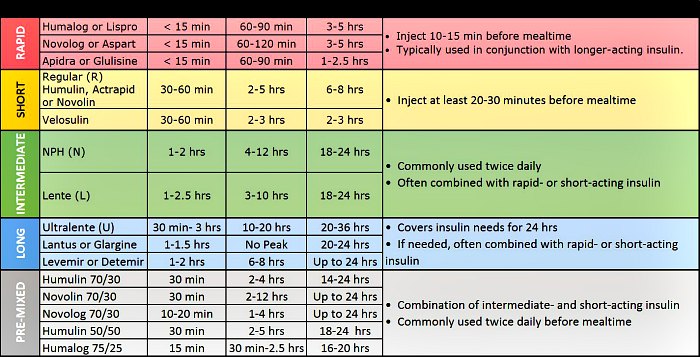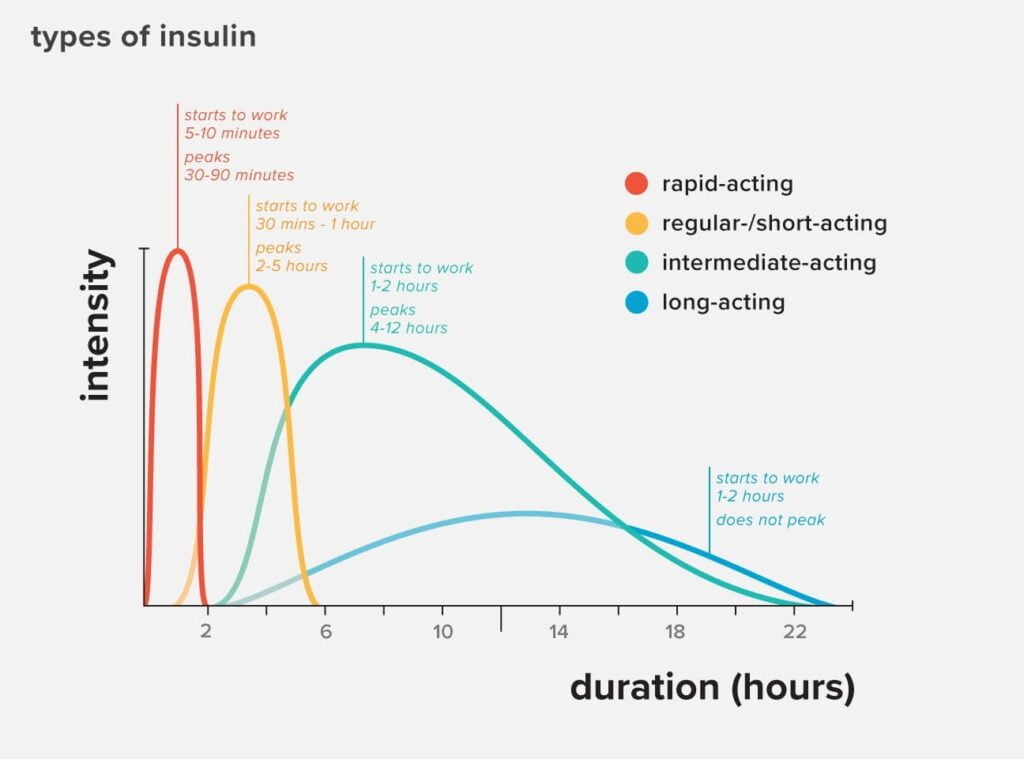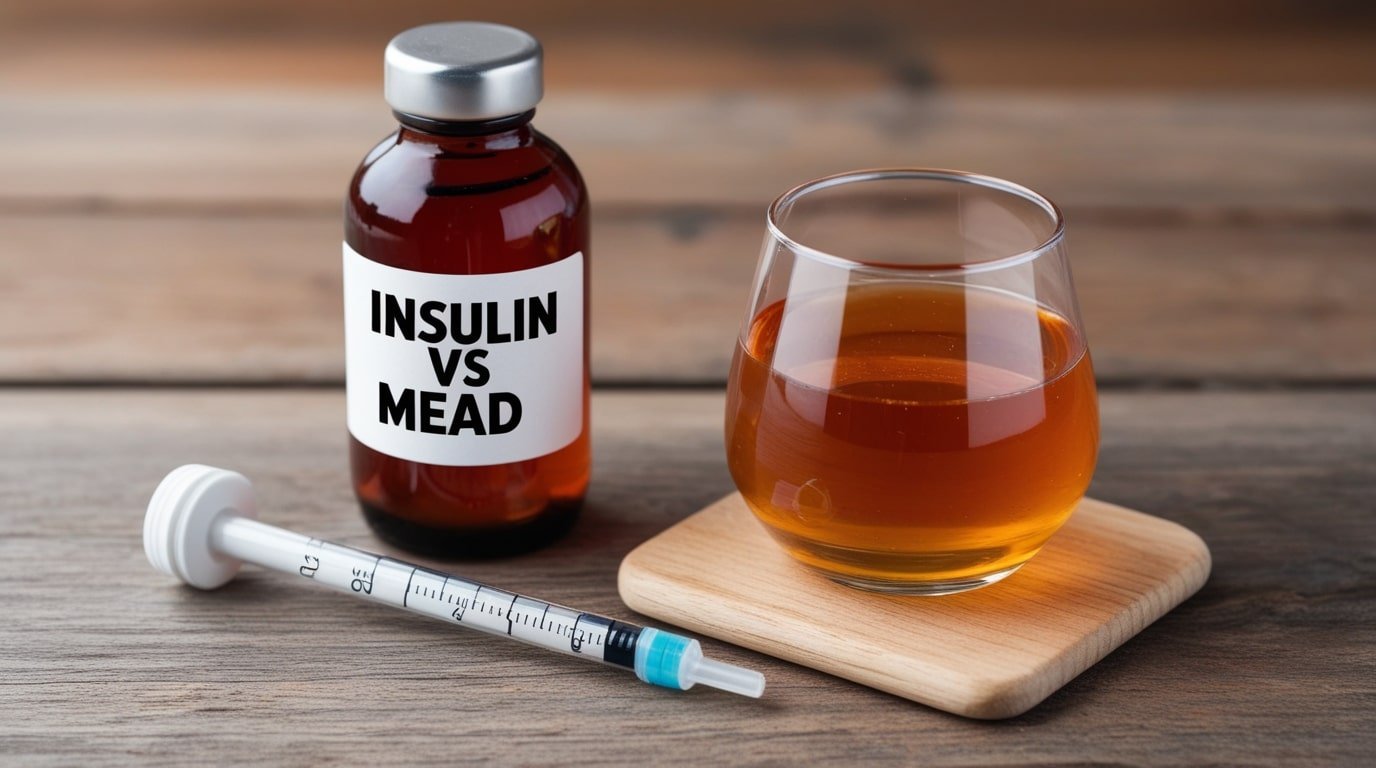Insulin can be categorized into different types based on how quickly they start working. These types include rapid-acting, regular-acting, intermediate-acting, and long-acting insulin. A combination of these types may be prescribed to manage type 2 diabetes.
Table of Contents
- Types of Insulin
- + 1. Rapid-acting Insulin
- + 2. Short-acting Insulin
- + 3. Intermediate-acting Insulin
- + 4. Long-acting Insulin
- + 5. Combination Insulin
- Insulin Brands
- + Rapid-acting insulin products include:
- + Regular- or short-acting products generally use insulin regular, including:
- + Intermediate-acting products generally use insulin isophane, including:
- + Long-acting insulin products include:
- How do you determine the appropriate insulin type for your needs?
- References list of sources used
When it comes to insulin replacement therapy, you can use either Human Insulin or Insulin Analogs. Depending on how fast it starts working, when it has the most significant effect, and how long it lasts, the timing of insulin’s action within the body can be categorized. However, human insulins can have some limitations when injected under the skin. So, to tackle these challenges, insulin analogs have been developed. Large amounts of human insulin can cause clumping, which can lead to slow and unpredictable absorption from the subcutaneous tissue. Also, the duration of its effect depends on the dose you take. But, with insulin analogs, you get a more predictable duration of action.

Types of Insulin
There are various types of insulin that can be classified according to their onset, peak, and duration of action. These types include rapid-acting insulin, short-acting insulin, intermediate-acting insulin, long-acting insulin, and combination insulin.
In addition to the common insulin types, there are also some less frequent subtypes and less common types, such as ultra-long acting, premixed, and rapid-acting inhaled insulin.

1. Rapid-acting Insulin
Rapid-acting insulin begins to work within 15 minutes after injection and reaches its peak effect within 30 minutes to an hour. The duration of action is typically around 2-4 hours. This type of insulin is often used to control blood sugar levels during and after meals.
2. Short-acting Insulin
Short-acting insulin, also known as regular insulin, begins to work within 30 minutes after injection and reaches its peak effect within 2-3 hours. The duration of action is typically around 3-6 hours. This type of insulin is often used to control blood sugar levels between meals and during the night.
3. Intermediate-acting Insulin
Intermediate-acting insulin begins to work within 2-4 hours after injection and reaches its peak effect within 4-12 hours. The duration of action is typically around 12-18 hours. This type of insulin is often used to control blood sugar levels overnight or between meals.
4. Long-acting Insulin
Long-acting insulin begins to work within 1-2 hours after injection and does not have a peak effect. The duration of action is typically around 20-24 hours. This type of insulin is often used to provide a steady baseline level of insulin throughout the day and night.
5. Combination Insulin
Combination insulin contains both rapid-acting and intermediate-acting insulin in one injection. This type of insulin is often used to simplify the insulin regimen for people who require both types of insulin.
Insulin Brands
Insulin comes in different types, but there are many prescription brands that offer it in its main forms. These brands have their own unique characteristics, such as the type of insulin they contain, how much you should take, and how it’s delivered. I’ve put together a list of the various insulin products and brands that are currently available to help you get a better understanding.
Rapid-acting insulin products include:
- insulin aspart (NovoLog)
- insulin glulisine (Apidra)
- insulin lispro (Humalog)
Regular- or short-acting products generally use insulin regular, including:
- Humulin R
- Humulin R U-500
- Humulin R U-500 KwikPen
- Novolin R
- Novolin R Innolet
- Novolin R PenFill
- ReliOn/Humulin R
- ReliOn/Novolin R
Intermediate-acting products generally use insulin isophane, including:
- Humulin N
- Humulin N KwikPen
- Humulin N Pen
- Novolin N
- Novolin N Innolet
- Novolin N PenFill
- ReliOn/Novolin N
Long-acting insulin products include:
- insulin detemir (Levemir, Levemir FlexPen, Levemir FlexTouch, Levemir InnoLet, Levemir PenFill)
- insulin degludec (Tresiba FlexTouch)
- insulin glargine (Basaglar KwikPen, Lantus, Lantus OptiClik Cartridge, Lantus Solostar Pen, Toujeo Max Solostar, Toujeo SoloStar).
Certain insulin manufacturers offer pre-made combinations of short-acting or regular insulin and intermediate-acting insulin, which are combined in a single insulin pen or bottle. These premixed insulin products consist of:
- Combinations of insulin isophane and insulin regular, which include Humalin 50/50, Humulin 70/30, Humulin 70/30 KwikPen, Novolin 70/30, and ReliON/Novolin 70/30.
- Combinations of insulin lispro and insulin lispro protamine, which include Humalog Mix 75/25 and Humalog Mix 75/25 KwikPen.
How do you determine the appropriate insulin type for your needs?
When it comes to choosing the right type of insulin, there are various factors that your doctor will take into account. Your doctor will consider different factors, such as your blood glucose levels, how long you’ve been living with type 2 diabetes, any medications you’re currently taking, your overall health and lifestyle, and your insurance coverage.
It’s essential to note that your insulin needs can change over time, and your treatment plan may shift accordingly. Your doctor may suggest trying a new insulin type if needed.
If you have any questions about why your doctor recommends a particular type of insulin, don’t hesitate to ask them. Your doctor can explain the benefits and drawbacks of different insulin options and provide advice on which option may be the best fit for you.
References list of sources used
- Insulin injections vs. insulin pump. (n.d.).
joslin.org/info/insulin_injections_vs_insulin_pump.html - Mayo Clinic Staff. (2016). Diabetes treatment: Using insulin to manage blood sugar.
mayoclinic.org/diseases-conditions/diabetes/in-depth/diabetes-treatment/art-20044084 - Mayo Clinic Staff. (2017). Insulin and weight gain: Keep the pounds off.
mayoclinic.org/diseases-conditions/diabetes/in-depth/insulin-and-weight-gain/art-20047836




